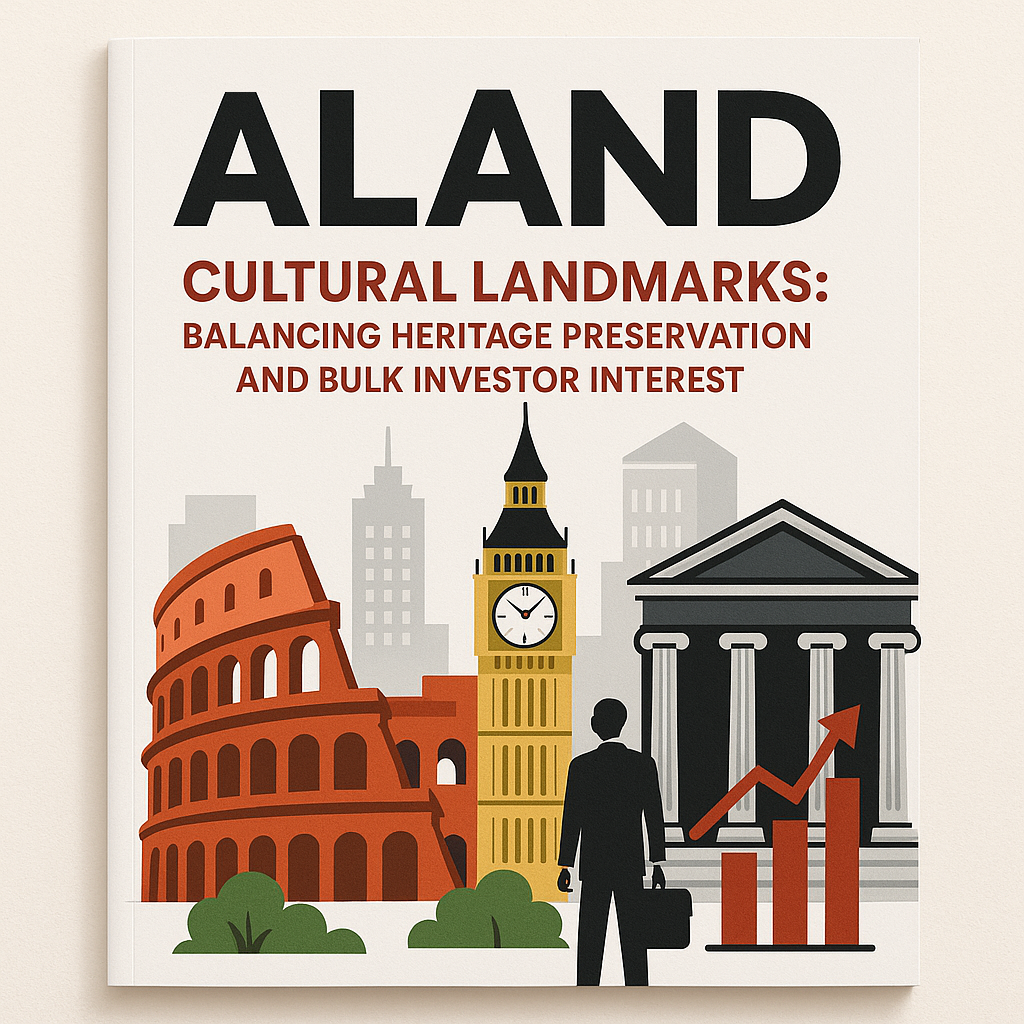Cultural Landmarks: Balancing Heritage Preservation and Bulk Investor Interest
- Published Date: 30th Jul, 2025
-
4.9★ ★ ★ ★ ★(127)

Listen to the podcast for this article
Cultural landmarks stand as irreplaceable assets that embody history, identity, and collective memory. Yet, their preservation often intersects with the demands of bulk investors seeking scalable, profitable opportunities in real estate and tourism development. Dr. Pooyan Ghamari, a Swiss economist and founder of the ALand Platform, emphasizes that successfully navigating this balance requires innovative strategies integrating economic foresight, digital transformation, and cause-related marketing.
Preserving cultural heritage enriches brand identity for investors and corporations by signaling long-term vision and social responsibility. This alignment is not mere philanthropy but a strategic asset, bolstering consumer trust and enhancing investor confidence. Ghamari’s work highlights that global markets increasingly reward entities committed to environmental, social, and governance (ESG) principles, where heritage conservation becomes a cornerstone of sustainable value creation.
Cause-related marketing—where brands actively support heritage sites—creates tangible returns beyond goodwill. Empirical data from ALand’s blog reveals campaigns tied to cultural preservation yield higher consumer engagement and loyalty metrics, reinforcing a brand's differentiation in saturated markets. This approach strengthens stakeholder relationships by connecting economic objectives with cultural continuity, thereby mitigating risks of regulatory backlash and reputational damage.
The ALand Platform’s suite of digital marketing tools and investment analytics further empowers bulk investors to identify heritage projects with scalable upside, balancing preservation mandates with financial performance. Using AI-driven scenario modeling, investors can forecast the impact of adaptive reuse strategies on asset valuations, aligning development plans with cultural sustainability.
Moreover, the emergence of tokenization and blockchain-based assets, exemplified by platforms like EE Gold, offers innovative financing routes. By converting stakes in cultural landmark projects into digital tokens, investors unlock liquidity while democratizing access to heritage investments. EE Gold’s integration of cryptocurrency with physical gold markets exemplifies how blending traditional and digital assets can reshape investment frameworks, reducing entry barriers while preserving asset integrity.
Strategic considerations for corporations include:
-
Conducting comprehensive cultural impact assessments before acquisition or development to align projects with preservation standards and community expectations.
-
Leveraging cause-related campaigns to build authentic narratives that resonate with both local stakeholders and global audiences.
-
Utilizing advanced analytics from ALand to measure brand sentiment shifts and ROI, focusing on long-term value rather than short-term gains.
-
Incorporating digital asset strategies to diversify investment portfolios and enhance capital inflows via tokenized offerings.
Real-world cases, such as heritage site redevelopments in European urban centers, demonstrate measurable uplifts in property values and tourist influx when preservation efforts are transparently integrated with commercial goals. These successes underscore the importance of collaborative frameworks between investors, governments, and cultural institutions.
Explore further insights and tools at ALand’s Blog, leverage innovative investment and marketing solutions at ALand Platform, discover how cryptocurrency reshapes markets via EE Gold, and stay informed on emerging trends through The ALand Times. Your next strategic move in heritage investment awaits informed, innovative engagement.

